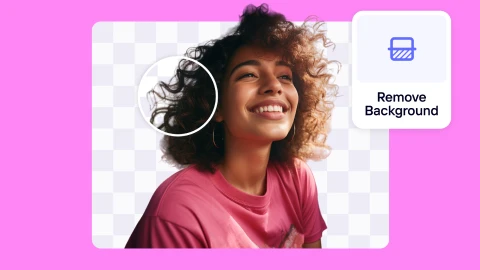How to sell AI prompts and make money in 2025
Now that AI tools like ChatGPT and Midjourney are mainstream, a new type of digital product has emerged almost overnight: AI prompts. People are turning their expertise into simple text instructions that help others get better results from AI tools. Unlike many other already saturated digital marketplaces, the prompt writing space is still developing, with new use cases and opportunities.
Like any income stream, it takes work, strategy, and persistence. But compared to many other online businesses, the barrier to entry is remarkably low. You don't need coding skills. You don't need a massive investment. You don't even need a website of your own if you don't want one.
In this article, you'll learn how to sell AI prompts online, including:
What AI prompts are and how to get started with selling them
The best way to create effective, high-quality prompts
How to package, price, and market your AI prompts
A quick comparison of the different AI prompt marketplaces
A short action plan at the end to give you direction
What are AI prompts?
An AI prompt is a set of instructions that tells an AI tool what you want it to do or create. Think of it like a recipe that guides the AI to produce specific results. The more detailed your instructions are, the more refined your results will be.
There are several different types of AI prompts, and it's helpful to understand the categories because they appeal to different audiences and can command different prices.
Instructional prompts: These are designed to help the AI explain concepts or create educational content. Teachers, trainers, and content creators love these because they can quickly generate lesson plans, explanations, or tutorials. For example, “Create a 5th-grade science lesson plan about the water cycle with a hands-on experiment, key vocabulary terms, assessment questions, and extension activities."
Creative prompts: These help generate stories, poetry, scripts, or other artistic content. Writers and creators use these to overcome writer's block or to generate creative ideas they can build upon.
Professional prompts: These are specialized for business applications like marketing copy, email sequences, product descriptions, or business plans. They're targeted at professionals looking to make their workflow more efficient.
Technical prompts: These are designed for coding, data analysis, or technical writing. Developers and technical professionals use these to debug code, generate documentation, or solve specific technical problems.
Visual prompts: These are instructions for AI image generators like Midjourney, Photoroom, or DALL-E. These require a different approach since they create images rather than text.
So when we talk about selling AI prompts, we're talking about creating these specialized instructions that help people get better results from AI tools.
Why sell AI prompts?
Several compelling reasons make this opportunity particularly attractive. The global prompt engineering market size accounted for USD 380.12 billion in 2024 and is predicted to increase to approximately USD 6.5 trillion by 2034.
Leverage your existing knowledge
Whatever field you work in or whatever hobbies you're passionate about, you already have specialized knowledge that others would find valuable. Are you a teacher? Create educational prompts. Marketing professional? Craft prompts for ad copy or email campaigns. Fitness enthusiast? Design workout plan generators.
Take Mrmoveee, for example, a photographer who leveraged his artistic background and technical knowledge of lighting, composition, and visual storytelling to create advanced photography prompts that work across multiple generators.
Low barrier to entry
To sell AI prompts online, all you need to start is a computer, an internet connection, and knowledge of how to write effective prompts. That's basically it. You don't need to code. You don't need expensive software. You don't need to manufacture or ship physical products. You don't even need a website if you're selling on established marketplaces. Compare that to starting almost any other type of business, and you'll see why this is so accessible.
Passive income potential
Once you create a prompt or a collection of prompts, you can sell it over and over again without additional work. You create it once, list it, and it can generate income while you focus on other things. Of course, you'll want to update your prompts occasionally as AI systems evolve, but the core work is largely upfront.
Exponential market demand
As more people and businesses adopt AI tools, they're discovering that the quality of their results depends heavily on the quality of their prompts. Not everyone wants to learn prompt engineering from scratch, so they're willing to pay for prompts that save them time and give them better results. The largest prompt marketplace, PromptBase, has grown from a small startup to hosting over 20,000 prompts, with some sellers earning five figures monthly.

Minimal overhead costs
Chances are you already own a smart device of any kind, so your major purchase will be a subscription to an AI tool ($30/month, average). Most prompt marketplaces charge a commission on sales rather than upfront fees, meaning you can list your prompts with essentially zero financial risk. Even if you eventually build a website to sell your prompts directly, the costs are still remarkably low compared to traditional businesses.
How to get started with selling AI prompts online
To get started with selling prompts online, here are a few fundamentals you need: These are the fundamentals you'll need to get started selling AI prompts.
Skills and knowledge
As mentioned earlier, you don't need a technical background or programming skills to succeed in this business. Here are the key abilities that will serve you well instead:
Clear communication is probably the most important skill you can have. You need to express instructions precisely and logically. If you're already good at explaining things to others or giving clear directions, you have a significant head start.
Subject matter expertise in at least one area gives you a major advantage over generic prompt creators. This expertise could be digital marketing, education, healthcare, legal knowledge, creative writing, fitness, real estate, or even specific hobbies. Your specialized knowledge is what will help your prompts stand out in the marketplace and command higher prices.
A basic understanding of how AI language models work is helpful, though not essential, when you're starting. You don't need to know the technical details, but understanding concepts like how these systems process information and respond to different types of instructions will help you create more effective prompts over time.
“'There's no real 'level' to AI. You can go right now and spend a whole entire week or two days or even five hours watching YouTube videos on AI and go right into Midjourney and start pulling out just as good pictures that I push out.” - Mrmoveee
Tools and resources
You only need a few tools to get started:
AI tools like ChatGPT, Claude, and Midjourney (for image-generating prompts)
A word processor or text editor for creating and organizing your prompts, e.g., Google Docs, Microsoft Word, or even the notepad of your device.
A spreadsheet program for tracking your prompts, their performance, and sales data, e.g., Excel, Google Sheets, or any basic spreadsheet software, will work fine.
Prompt marketplace(s) or any digital product marketplace.
Initial investment considerations
Subscription fees for AI platforms will be your biggest ongoing expense, typically ranging from $30 to $200 monthly, depending on which platforms you choose and how many you use for testing. Marketplace fees are generally commission-based rather than upfront costs. Most platforms take 20-30% of each sale, which means you only pay when you actually make money..
Educational resources like courses on prompt engineering are also optional. While they can be helpful, they typically range from free YouTube tutorials to a few hundred dollars for comprehensive courses. You can certainly start without any formal training and learn as you go.
How to create effective AI prompts that sell
Before going into the creative process of writing your prompts, it's important that you first identify the valuable niches you can sell in. The most successful prompt sellers don't try to create general prompts for everyone; they focus on specific areas where they can provide unique value. Start by asking yourself these questions:
What do I know really well?
What problems am I good at solving?
What industries or fields am I familiar with?
Your answers will point you towards the niches where you can provide high value. For example, Mrmoveee's photography background gives him an edge in understanding what makes compelling visuals.
Pro tip: Beyond your personal expertise, look for areas with strong demand but limited competition. Tools like PromptBase's trending section can help you identify these opportunities.

Once you have your niche, it’s time to start writing your prompts, and here’s how to write high-quality prompts:
1. Be specific
Vague prompts lead to vague results. There’s no need to beat around the bush for you. Here is an example:
Prompt A: Create a product image of a wallet
Prompt B: Create a lifestyle product image of a premium leather wallet sitting on a marble coffee table next to a vintage watch and keys, shot from a 45-degree angle with warm natural lighting streaming from the left, professional photography style for e-commerce listing
I tried both prompts with Photoroom’s AI Images tool, and this was the result:

The second prompt is something an e-commerce seller would gladly pay for because it gives them exactly the polished, professional product image they need for their online store.
2. Be outcome-driven
People don't buy prompts; they buy the results those prompts deliver. Be crystal clear about what outcome your prompt will produce. Will it create a week's worth of engaging social media posts? Or generate a custom workout plan? The more concrete and valuable the outcome, the more appealing your prompt will be. Here's an example:
Prompt A: Create a business card
Prompt B: Design a professional business card for Martina Ezu, financial advisor at Ezu Finance, located at NY 1234. Use elegant gold accents, a navy blue background, clean typography featuring name, title, phone, and company name. Make the design suitable for high-net-worth client meetings

More concrete and valuable outcomes are more appealing, making it easier to sell your AI prompts.
3. Be audience-specific
Another way to create high-quality prompts is to tailor them for specific audiences:
Prompt A: Create a movie poster title for Mysterious Echoes
Prompt B: Design a movie poster for indie horror films featuring hand-drawn typography, distressed textures, muted color palette with blood-red accents, classic 1970s B-movie aesthetic. The movie title is [movie title] and the tagline is [tagline]
I designed the posters with Photoroom to test both prompts.

The specialized prompt targets a specific market (indie filmmakers in the horror genre) who are willing to pay premium prices because it perfectly captures the aesthetic they need to market their films to horror enthusiasts. This faces virtually no competition compared to generic poster prompts and can command 3-5x higher prices.
4. Solve real problems
The most valuable prompts address actual pain points people face. Here's an example:
Prompt A: Create product packaging for my tea brand
Prompt B: Design premium product packaging for an artisanal tea brand with a minimalist aesthetic, earth-tone color palette, clear product window, elegant typography, and sustainable packaging messaging that appeals to eco-conscious consumers
The first prompt will have the business owner struggling to adjust the colors and other elements to fit their brand. The second prompt directly addresses the common problem of small businesses needing professional packaging design but lacking the budget for a graphic designer. It helps the user give the AI tool adequate details for great results. Here is a comparison using Photoroom’s product photography tool.
I used the product packaging option in Photoroom to test both prompts. The first prompt produced a generic packaging common to multiple tea products. But the second result stands out.

5. Ensure clarity and readability
Your prompt should be easy to understand and use. Avoid jargon unless you're targeting a technical audience that understands it. Here's what this looks like:
Prompt A: Write a product description for my [PRODUCT] using advanced semantic enhancement methodologies
Prompt B: Write a product description to include emotional benefits, clear features, and persuasive language that converts browsers into buyers. Include [PRODUCT NAME], [KEY BENEFIT], and [TARGET CUSTOMER] placeholders for easy customization
The second prompt is user-friendly with clear placeholders that make customization simple for the user.
Pro tip: Test and refine all your prompts before putting them up for sale. Here's my recommended testing process:
Run the initial through the intended AI tool at least 3-5 times with different variables
Identify any weaknesses or inconsistencies in the outputs and revise the prompt to address them
Have someone unfamiliar with the prompt try using it and make final refinements
"I used Photoroom to speed up my workflow. If I wanted to remove backgrounds or create flyers or business cards, we would have to do it manually. But with Photoroom, you can design and edit on the go and it doesn't feel like you are putting that much time into it. I also use Photoroom because you have the AI generative body in there that allows you to make images, so I go in there sometimes and I will create different inspiration shots for my photography." - Mrmoveee
Common mistakes to avoid when creating AI prompts
Over-generalizing your prompts is perhaps the most common mistake. Creating generic prompts that try to appeal to everyone usually results in prompts that perfectly suit no one. For example, a generic "blog post writer" prompt might seem like it would appeal to more people than a "technical SEO blog post generator for SaaS companies," but the specialized prompt will likely sell better and at higher prices because it solves a specific problem for a defined audience.
Other common mistakes to avoid are:
Not putting enough instructions on how to use your prompts. If buyers don’t understand how to use/customize your prompts, they won’t come back. So, include clear instructions and sample outputs if possible.
Not testing your prompts on multiple tools. Many creators test only on the latest GPT version or only with Claude, forgetting that buyers might use different models or versions. This leads to disappointed customers and refund requests.
Focusing on quantity over quality is tempting in a marketplace where having more products can increase visibility. However, a catalog of mediocre prompts damages your brand and leads to poor reviews.
Depending on only one sales platform leaves you vulnerable to things like algorithm changes, an increase in commission, and other things out of your control. Try to build direct relationships with your customers through an email list.
“I sometimes make $40 to $60/prompt because the prompts I make are advanced and work with many generators. Anyone can go into a generator, put in a bunch of keywords and get photos, but not anyone can go in there and get something that is creative, with certain color tones and moods” - Mrmoveee
The top three AI prompt marketplaces
| Platforms | PromptBase | PromptBazaar | Promptrr |
|---|---|---|---|
| Website | promptbase.com | promptbazaar.ai | promptrr.io |
| Commission rate | 20% | 18% | 20% |
| Seller revenue share | 80% | 82% | 80% |
| Minimum payout | $30 | $25 | $50 |
| Text AI platforms | ChatGPT, GPT-4, Claude | ChatGPT, Claude | ChatGPT, Gemini |
| Image AI platforms | Midjourney, DALL-E, Stable Diffusion, Flux, Sora | Midjourney, DALL-E, Leonardo AI, Stable Diffusion | Midjourney, Leonardo AI |
| Daily upload limit | 2 prompts/day | Unlimited | Not specified |
| Payment methods | Stripe (majorly) | PayPal | Bank and PayPal |
| Best for | Established creators with a following | New creators that want quality focus | Beginners that want simplicity |
You can also diversify and sell AI prompts on general online marketplaces like Etsy and Gumroad. These platforms provide several advantages, such as:
Greater control over your listings and pricing
Access to broader audiences beyond just AI enthusiasts
Established trust and payment systems
Ability to build your own brand presence
Etsy takes 6.5% of the total order amount and $0.20 per item listed. They also have a 3% payment processing fee + $0.25 per transaction. There is no minimum payout, and there are multiple withdrawal options.
Gumroad, on the other hand, takes a 10% commission on all sales and no extra charges anywhere else. They payout every Friday, and a $10 minimum balance is required for your first payout.
Pricing and packaging your AI prompts
Once you are done preparing your prompts, you need to package them into a complete digital product (not just a Google Doc). Each marketplace has its own requirements and best practices, but generally, you'll want to include:
The prompt itself, clearly formatted and easy to copy
Step-by-step instructions for using the prompt effectively
Examples of the outputs the prompt creates
Any necessary context or background information
Variables the user should customize for their specific needs
Troubleshooting tips for common issues or unexpected results
When it comes to pricing your prompts, there's no one-size-fits-all approach, but there are several important factors that should influence your pricing decisions.
The value your prompt delivers is the most important factor. A prompt that saves someone 10 minutes might be worth $5, while one that saves them 5 hours could be worth $50 or more. A prompt that helps someone make money, like sales copy generators or business strategy frameworks, can command higher prices than one that simply saves time. If you've created something sophisticated that took considerable expertise and testing to develop, you can also charge more.
You can also consider the norms of the marketplace you are listing in. Look at similar prompts in your category and see what they're charging. You don't have to match these prices exactly, but they give you a reasonable range to consider. When starting out, pricing slightly below the competition can help you gain initial traction and reviews.
Creating tiered offerings and bundles is also a smart strategy to increase your average order value.
For example, if you sell email marketing prompts, your tiers might look like:
Basic ($15): Cold email outreach prompt
Standard ($35): Cold email outreach prompt + follow-up sequence generator
Premium ($65): Complete cold email system with outreach, follow-ups, objection handlers, and meeting scheduler templates
Pro tip: If you have already built a good following on social media, you can guarantee a steady stream of passive income by providing a prompt subscription service, like the example below from Mackenzie Heflin. Her prompts are focused on storytelling and not AI, but she has a well-structured prompt delivery membership.

How to effectively market your AI prompts
Having amazing prompts isn't enough if no one knows they exist. Effective marketing can be the difference between making occasional sales and building a thriving AI prompt business.
Build your brand as a prompt engineer
Start by identifying your unique value proposition. This differentiation becomes the core of your brand messaging and helps buyers understand why they should choose your prompts over others. Your background and story can also be powerful branding elements. Sharing why you create prompts and what makes you qualified helps buyers connect with you personally.
List your prompts properly
Your prompt listing is essentially your sales page, so it needs to convince browsers to become buyers. Every element of your listing matters.
Use clear, specific titles that communicate what problem your product solves.
Your prompt description should focus on the benefits and not just the features.
Use bullet points to highlight your key selling points
Include social proof (if it’s your first prompt, have people use it for free in exchange for a review)
If there are any limitations, be transparent about them.
Leverage social media and communities
Each social media platform requires a different approach:
Twitter/X. Share examples of your prompts' outputs and participate in AI conversations. Use hashtags like #PromptEngineering and #AI to increase discoverability.
LinkedIn. Share case studies showing how your prompts solve business problems. Professional audiences pay premium prices for workplace solutions.
Reddit. Provide value in communities like r/ChatGPT and r/PromptEngineering. Follow self-promotion rules and focus on being helpful first.
Facebook groups. Join AI-focused groups where your target audience gathers. Become a valuable member before promoting products.
The key to social media success is participation, not just promotion. Build trust through consistent value, and sales will follow naturally.
Get customers beyond marketplaces
Content marketing. Create blog posts, videos, or podcasts about AI use cases to attract your target audience naturally.
Free samples. Offer basic versions of your prompts to let customers experience your quality before purchasing premium versions.
Strategic partnerships. Collaborate with course creators, consultants, or businesses that serve your target audience.
Email marketing. Collect emails by offering free prompts, then announce new releases directly to interested customers.
Remember: your existing customers are your best source of future sales. Focus on building relationships through exceptional value and support.
Legal and ethical considerations
When you create a prompt, you generally own the text of the prompt itself. You can sell, license, or distribute it according to your terms. However, there are important nuances to consider:
Some marketplaces claim certain rights to prompts listed on their platforms. Always read the terms of service carefully before listing.
Outputs created by AI currently have unclear copyright status in many jurisdictions. Selling your prompt gives people the right to use it and the outputs it creates, but doesn't transfer any rights to resell the prompt itself.
Avoid incorporating copyrighted material from others in your prompts. For example, don't create prompts that specifically instruct the AI to write in the style of a living author or to recreate specific copyrighted works.
Start your AI prompt side business
Ready to turn your knowledge into a profitable prompt business? Here's your practical roadmap to selling AI prompts and scaling systematically.
Identify 1-3 niches where your expertise intersects with market demand.
Create accounts on ChatGPT Plus, Claude, or relevant AI platforms needed for your prompt category.
Choose your primary marketplace.
Develop your first 3-5 high-quality prompts, testing each extensively with different variables and scenarios.
Write compelling listings with benefit-focused descriptions, clear titles, and strategic pricing based on value delivered.
Launch your prompts with professional documentation, usage examples, and complete marketplace profiles.
Gather initial customer feedback and reviews, offering free trials to early users if necessary to build social proof.
Analyze performance data to identify your best-selling prompts and understand what resonates with buyers.
Create your first prompt bundle combining related prompts that solve complementary problems for the same audience.
Establish a social media presence on 1-2 platforms where your target customers are most active.
Develop a simple lead magnet (free prompt) to start building an email list of potential customers.
Scale by creating premium versions, expanding to additional marketplaces, and developing recurring revenue streams.




Design your next great image
Whether you're selling, promoting, or posting, bring your idea to life with a design that stands out.
















